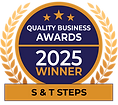Running Essentials to get Started
- Tim Moss
- Apr 23
- 3 min read
Starting a running journey can be both exciting and challenging, especially for beginners. With all the information out there, it’s easy to feel lost. However, knowing the essentials will help you create a strong base for your running routine. In this blog post, we will discuss the must-have essentials for starting running, some optional gear that can enhance your experience, and tips to keep you motivated on your journey. Here are your running essentials to get started:

Set a Goal
Before you start running, it's crucial to set specific goals. Whether you want to run a mile without stopping, prepare for your first 5K, or simply make running a habit, having clear objectives can significantly boost your motivation.
For example, use the SMART framework to define your goal. Instead of saying "I want to run more," try "I want to run three times a week for 20 minutes each session for the next month." Goals like these are measurable and time-bound, which makes tracking your progress easy and helps maintain your enthusiasm as you achieve each milestone.
Running Program
After setting your goal, it’s time to choose a running program suited to your experience level. Programs like Couch to 5K (C25K) are excellent for beginners. They offer structured training that gradually builds your endurance, starting with walking for about 20-30 minutes before transitioning to running. Many of these programs require just three workouts a week, making them manageable for those with busy schedules.
You can also explore apps that provide personalized running plans and audio coaching. Apps such as Nike Run Club or Runkeeper offer tailored workouts and motivational support to keep your training engaging.
Good Running Shoes
Investing in a quality pair of running shoes is one of the most important steps a beginner can take. Running shoes are specifically designed to support your stride and cushion impact, reducing the risk of injuries.
When shopping for shoes, visit a specialized running store where staff can analyze your running gait and recommend suitable options. Pay attention to factors like arch support, cushioning, stability, and fit. A good rule of thumb is to buy shoes a half-size bigger than your normal size to accommodate foot swelling that occurs during runs.
Safe Place to Run
Finding a secure place to run is essential for both enjoyment and motivation. Look for local parks, trails, or tracks that offer flat, even surfaces.
Avoid busy streets and always be aware of your surroundings, especially in urban areas. To prevent boredom and enhance safety, vary your running routes. Stick to well-lit paths if you plan to run in the early mornings or late evenings.
Way to Track Your Runs
Tracking your progress is powerful motivation, and there are many ways to do this. Many runners use smartphones or GPS watches to record their distance, pace, time, and routes. Popular apps such as Strava or MapMyRun are user-friendly and offer features like social engagement and challenges.
If you prefer a traditional option, consider keeping a running journal. This allows you to document your runs as well as reflect on your feelings, weather conditions, and improvements over time. Whether you choose a digital or analog method, tracking will help hold you accountable to your goals.
Extra Gear Worth Considering
In addition to the essentials, some optional items can enhance your experience.
Hydration Gels & Electrolytes: While more crucial for longer runs (typically over 10 miles), gels and electrolyte drinks help replenish energy during intense workouts. Though they may not be necessary for short runs, they are nice to have as you advance.
Compression Wear: These can provide muscle support and potentially reduce post-run soreness. While not essential for everyone, many runners find them beneficial, especially during recovery.
Wrapping Up
Starting your running journey doesn’t have to be overwhelming. By setting clear goals, following a structured running program, investing in quality shoes, and selecting safe running environments, you can create a solid foundation for your fitness routine. Tracking your progress will keep you motivated and informed about your improvements.
Optional items like hydration gels, compression gear, and more can be added to your routine as you discover what works best for you.
Remember, running is a personal journey and offers many rewards, from improved fitness to new friendships. So lace up those shoes, head to your local park, and enjoy the run!

Happy running!





Comments